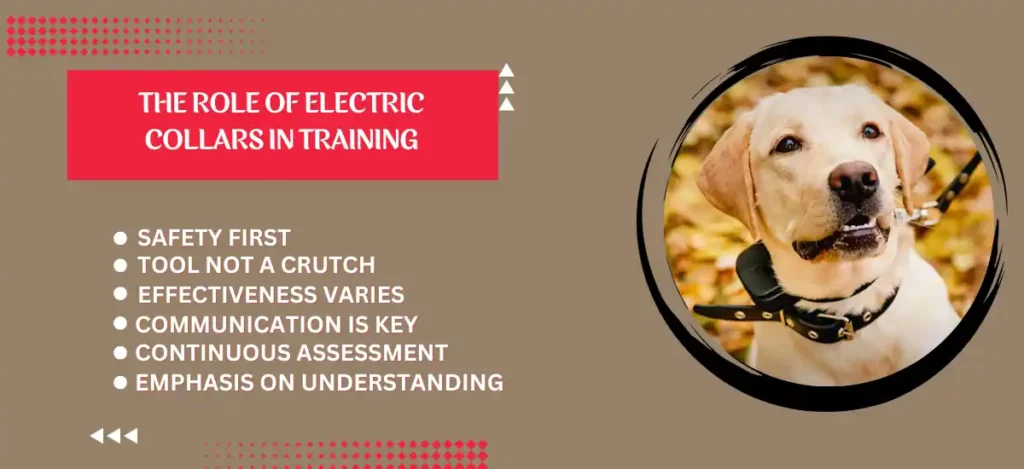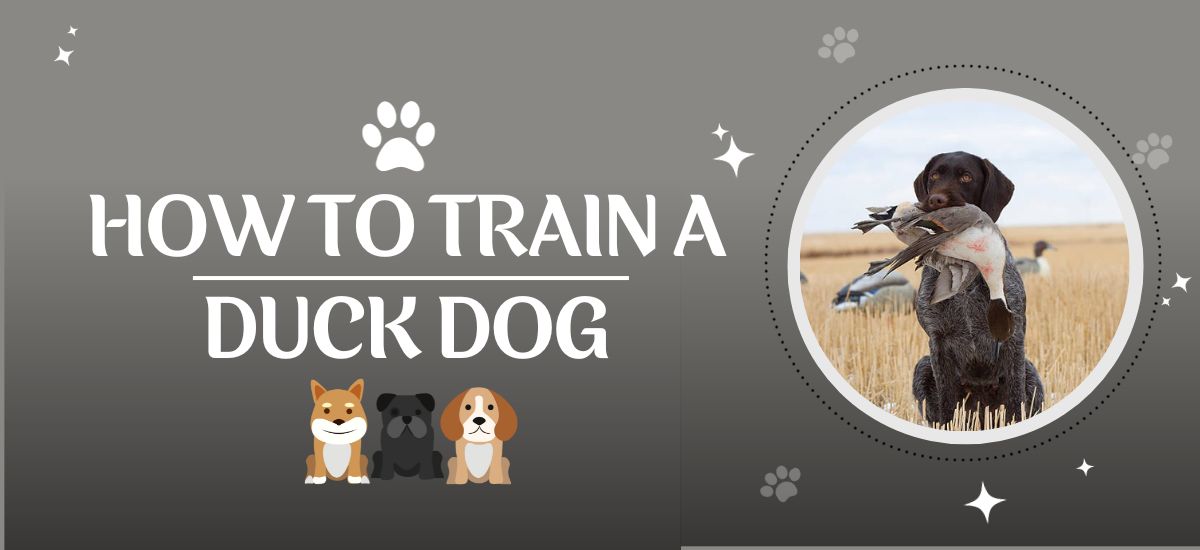From time immemorial, the bond between man and canine has been a testament to mutual trust and companionship. Within this age-old relationship lies the intricate art of train a duck dog, a practice steeped in tradition yet constantly evolving with the times.
As the years have rolled on, training techniques have undergone transformations, adapting to changing environments and hunting needs. However, the core objective has remained unwavering: to nurture a hunting companion that embodies loyalty, skill, and efficiency.
This guide seeks to journey through the labyrinth of train a duck dog, bridging the wisdom of yesteryears with contemporary insights. As we delve deeper, readers will be introduced to a harmonious blend of time-honored practices and modern methodologies, all aimed at achieving the pinnacle of training excellence.
Understanding The Basics
As one prepares to venture into the realm of train a duck dog, it’s imperative to first acquaint oneself with the bedrock of the discipline. At the heart of this endeavor lies the principle of obedience, which serves as the linchpin for all subsequent training stages. However, true training transcends mere command adherence.
It’s a symphony of mutual comprehension and respect between the trainer and the canine. A genuinely well-trained dog isn’t just a creature of rote responses but a being that understands the intent behind each directive and reciprocates with trust and loyalty.
The Importance Of Obedience First
- Foundational Focus: Before delving into intricate techniques, it’s essential to establish a strong foundation in obedience.
- Common Pitfalls: A significant number of trainers, in their eagerness, leapfrog to advanced methods, bypassing the basics of obedience.
- Consequences of Oversight: Neglecting initial obedience training can result in erratic and unstable behaviors during actual hunting scenarios.
- Building a Steady Base: Prioritizing obedience from the outset not only instills discipline but also paves the way for a more structured and effective advanced training regimen.
The Non-Retrieve Technique

- Conceptual Understanding:
- The non-retrieve technique is a strategic approach where the dog is trained to observe a fallen object, often a dummy or a bird, without immediately retrieving it.
- Teaching Patience:
- This method is instrumental in cultivating patience in the dog. Instead of rushing to fetch, the dog learns to wait for a command or signal.
- Instilling Steadiness:
- By repeatedly practicing this technique, the dog becomes steady, resisting the urge to impulsively chase after every fallen object.
- Sense Of Restraint:
- Over time, the dog internalizes a sense of restraint. This self-control is crucial, especially in real hunting scenarios where immediate retrieval might not always be desired.
- Building Anticipation:
- The technique also builds anticipation in the dog. This heightened sense of expectation can be channeled positively in advanced training stages.
- Practical Application:
- In a typical non-retrieve training session, trainers might throw a dummy or bird, allowing the dog to watch its descent. The dog is then commanded to stay put, resisting the urge to fetch immediately. Only upon a specific command or after a set duration does the dog retrieve the object.
- Benefits For Hunting:
- In actual hunting scenarios, this technique ensures that the dog doesn’t scare away other potential game by rushing in. It also ensures safety, as the dog won’t impulsively dash into potentially dangerous terrains or situations.
By consistently applying the non-retrieve technique, trainers can mold their dogs into disciplined hunting companions, ready to act with precision and patience.
Mastery Of the Recall: Responding To Command
- The Essence of Recall:
- The act of a dog promptly returning to its handler upon command is termed as ‘recall.’ It’s one of the most fundamental yet vital commands in a dog’s training repertoire.
- Potential Risks of Neglect:
- A dog that fails to respond can not only disrupt a hunting expedition but also pose risks. Whether it’s running into traffic, approaching dangerous wildlife, or getting lost, the consequences of a poor recall can be dire.
- Training Environment:
- Begin in a controlled environment, like a fenced yard or a quiet room. Starting in a distraction-free zone ensures the dog can focus solely on the trainer’s command.
- Positive Reinforcement:
- Every time the dog successfully responds to the recall command, reward it. Whether it’s a treat, praise, or a favorite toy, positive reinforcement strengthens the association between the command and the desired action.
- Gradual Progression:
- As the dog becomes more consistent in a controlled environment, introduce mild distractions. Over time, increase the level of distractions, ensuring the dog remains responsive even in challenging scenarios.
- Practical Application In Hunting:
- In the field, a reliable recall ensures that the dog can be called back from chasing unwanted game, venturing into hazardous areas, or when another command needs to be given.
- Consistent Command:
- Whether it’s a whistle, a specific word, or a hand gesture, ensure the recall command is consistent. Changing commands can confuse the dog and hinder the training process.
- Regular Practice:
- Like any skill, recall improves with practice. Regularly revisiting the command, even after the dog has mastered it, ensures it remains sharp and responsive.
In the vast expanse of the outdoors, where unpredictability reigns, having a dog that reliably returns on command is not just a convenience—it’s a necessity. Through structured training and consistent practice, a dog can be conditioned to respond promptly, ensuring both its safety and the success of the hunt.
The Issue Of “Too Much Dog”
The term “overdogged” has emerged in modern dog training circles, often as a byproduct of competitive field trials. These trials, designed to showcase a dog’s speed and intensity, have inadvertently led to the breeding and training of dogs that are excessively aggressive or hyperactive. While such traits might shine in a competition, they can be problematic in real-world hunting.
Recognizing an “overdogged” dog is the first step. These dogs often break commands early, show signs of restlessness, or even display aggression. The challenge for trainers is to harness this drive while ensuring discipline. This balance is crucial for practical hunting scenarios.
Addressing this issue might involve revisiting foundational obedience training, introducing calming exercises, or seeking expert guidance. Regular socialization, exposing the dog to different environments and game, can also help temper their aggression. Ultimately, the goal is to achieve a harmonious balance between a dog’s natural enthusiasm and the discipline required for safe and effective hunting.
The Evolution Of Labrador Retrievers
Historically, Labrador Retrievers were celebrated for their calm and gentle nature. However, recent breeding practices, often influenced by competitive demands, have ushered in a noticeable shift in their temperament.
While Labradors still retain much of their inherent charm, there’s an undeniable increase in their drive and intensity. For trainers, recognizing this evolution is pivotal. It allows them to tailor their training techniques, ensuring they cater to the modern Labrador’s temperament while preserving the breed’s innate qualities.
The Role Of Electric Collars In Training

- Tool, Not A Crutch: Electric collars, when used correctly, can be a valuable training tool. However, they shouldn’t replace traditional training methods but complement them.
- Effectiveness Varies: While some dogs may respond well to electric collar training, others might find it distressing or confusing. It’s essential to gauge each dog’s reaction.
- Emphasis On Understanding: The core of any training, irrespective of tools used, should be mutual understanding between the dog and the trainer.
- Communication Is Key: Electric collars should aid in communication, not hinder it. Trainers must ensure that the dog understands the reason for the stimulation.
- Safety First: It’s crucial to use electric collars judiciously, ensuring the intensity is appropriate and not harmful.
- Continuous Assessment: Regularly evaluate the dog’s progress and well-being. If the collar seems to cause distress or isn’t yielding results, it might be time to reconsider its use.
Incorporating electric collars into training requires a balanced approach, always prioritizing the dog’s well-being and the essence of effective communication.
Selective Breeding vs Training
| Aspect | Selective Breeding | Training |
| Primary Focus | Genetic traits and inherent behaviors | Modifying or enhancing behaviors |
| Duration | Generational (Long-term) | Can be short-term or ongoing |
| Control | Limited to choosing parent breeds | Direct influence through techniques and methods |
| Predictability | Traits are often predictable but not always guaranteed | Outcomes can vary based on methods and consistency |
| Limitations | Cannot change inherited genetic traits | Cannot override strong genetic predispositions |
| Benefits | Can ensure specific physical and temperamental traits | Can address and correct undesirable behaviors |
| Considerations | Ethical breeding practices, avoiding inbreeding | Ensuring humane and effective training methods |
| End Result | A dog with inherent traits suited for specific tasks | A well-trained dog adaptable to various situations |
The Ideal Duck Dog
The perfect duck dog is a blend of innate temperament and meticulous training. Its foundation lies in selective breeding, ensuring a naturally calm and cooperative demeanor. However, genetics is just the starting point.
Compassionate training refines these inherent traits, forging a bond of loyalty and obedience between the dog and trainer. Beyond its hunting prowess, this ideal companion, shaped by nature and nurture, seamlessly integrates into family life, embodying both skill and heart.
Using Data In Training
In the modern age of dog training, relying solely on anecdotal evidence or age-old practices can be limiting. Instead, a more enlightened approach involves leveraging data and empirical evidence.
By turning to research, studies, and documented case histories, trainers can ensure that their methods are not only effective but also rooted in science. This evidence-based training approach offers a dual benefit: it maximizes the potential for successful outcomes while ensuring the well-being and humane treatment of the dog.
In essence, data-driven training bridges the gap between tradition and innovation, providing trainers with tools that are both proven and progressive.
Consistency In Training
Training a dog is akin to sculpting a masterpiece; it requires patience, precision, and above all, consistency. Whether it’s the tone of command, the reward system, or the training schedule, maintaining uniformity is paramount.
A dog thrives on predictability. When faced with a consistent training regimen, it can better understand, internalize, and respond to commands. Inconsistencies, on the other hand, can lead to confusion, making the training process longer and less effective.
Just as a teacher maintains a consistent curriculum for students, a dog trainer must ensure that their approach, in both technique and demeanor, remains steady. This consistency lays the foundation for a trusting relationship, where the dog feels secure and is more receptive to learning.
Additional Tips And Tricks

- Individuality Matters: Each dog has its own personality and quirks. Recognize and respect them.
- Flexible Approach: While guidelines are helpful, be ready to adapt based on your dog’s responses.
- Know Your Dog: Pay attention to their strengths and areas that need improvement.
- Trust The Process: Training takes time. Celebrate small victories along the way.
People Also Ask
Q1: How long does it take to train a duck dog?
Ans: While basic training can be achieved in a few months, comprehensive training for hunting scenarios can take up to a year or more, depending on the dog and the consistency of training.
Q2: Are certain breeds better suited for duck hunting?
Ans: While breeds like Labrador Retrievers are popular choices, the key lies in the individual dog’s temperament and training.
Q3: How do I ensure my dog is safe during hunting expeditions?
Ans: Regular health check-ups, proper gear, and obedience training are essential to ensure safety.
Wrapping Up
Training a duck dog intertwines knowledge, dedication, and heart. Embracing the right methods fosters a deep, enduring connection between trainer and canine, enriching the hunting experience and beyond.
Related Post:
